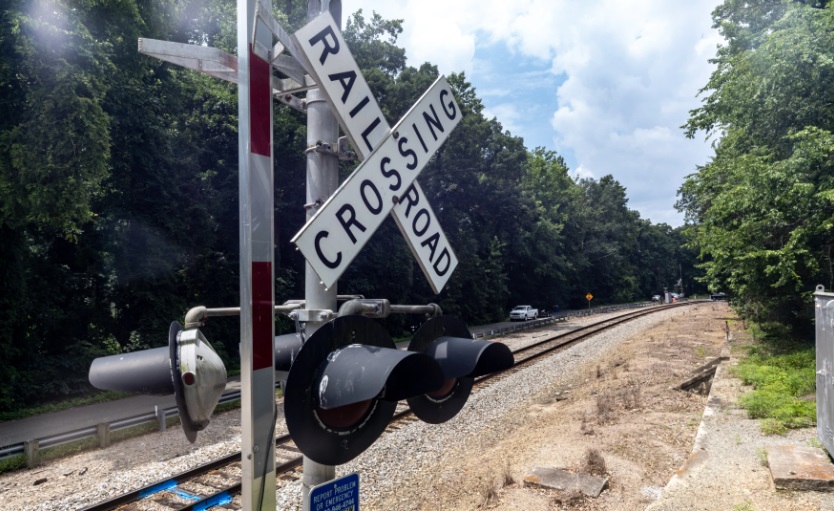Earlier this month, two federal grants totaling well over $1 billion were awarded to help move along major rail infrastructure improvements. One day, that means passenger rail will more quickly propel riders from Richmond to Washington, D.C., or Raleigh, North Carolina.
Getting to Raleigh quicker would make Da’Quan Love ditch his car. Love is the owner of the political fundraising group Reflex Strategy Group, and he also serves as the executive director of the NAACP in North Carolina. He commutes south about two times a week — a trip that can take up to three hours, one way. Math: That’s about 12 hours total driving each week just to and from work.
This story was reported and written by VPM News
“I’d absolutely love to take the train, because I can get some work done," Love said while leaving Raleigh. “I just hope that they would also improve the internet service.”
The influx of federal grants to fix rail infrastructure with the end goal of getting drivers out of their cars has been going on for years according to D.J. Stadtler, executive director of the Virginia Passenger Rail Authority.
“As we've seen over the last week, and really over the last couple of years, the feds are really excited about growing infrastructure. They see the congestion, too,” Stadtler said. “Rush-hour traffic and congestion is bipartisan. So whether you're Republican, a Democrat, Independent — if you are in traffic, you don't like it.”
Stadtler said over the last few years, Amtrak ridership in Virginia has increased. According to a press release, the rail line saw its highest ridership increase ever, with a 20.1% jump over last year.
“We have set a record for each month of ridership for the last 15 or 16 months,” he added. “We have the momentum going where ridership is setting records, blowing away even the pre-COVID numbers. We feel like we will be continually well-positioned to compete for infrastructure money to help get folks off the road, help the environment and give people a better quality of transportation.”
But not everyone will be able to ride the train even once all the infrastructure upgrades are finished.
Matt Simmons, president of the company that runs Capital Ale House and Fest Biergarten, travels up to Fairfax at least twice a week for work.
“I don't think the stops for the train are close enough to my restaurants,” Simmons said. “And there's a lot of times I have to make stops on the way. So, I don't think that would work for me.”
Simmons did say that he’d definitely take the train when he goes to D.C. for events or fun, especially since parking at most hotels costs the same as a train ticket.
The timeline for completion — at least for trains running back and forth from Richmond to D.C on an hourly basis — is about six years away.
“2030 is the magic number for north of Richmond,” Stadtler said. “2030 is when all of the Phase 2 projects will be done between Richmond and D.C.”
But riders looking for the express line from Richmond to Raleigh will have to wait a while longer.
The recent announcement by North Carolina Sen. Thom Tillis of a $1 billion grant from the U.S. Department of Transportation — for a new passenger rail route between Raleigh and Richmond — was only for North Carolina, said Stadtler.
The route, once completed, will be along a former CSX freight line and be called the S-Line.
“CSX used to have the S-Line that took traffic straight down through Virginia to North Carolina,” said Stadtler. “They have pulled a lot of that up, because they didn't use it.”
VPRA purchased the S-Line with the goal of rebuilding it. Once operational, it’ll cut about 1 hour, 15 minutes off the roughly 4-hour route.
Stadtler said VPRA is only in the design stages of what the line will eventually look like. He doesn’t expect the S-Line to be operational until years after 2030.
“I'm very reluctant to say how many ‘a few’ is,” Stadtler said. “Once we get that design work done by the end of 2024, we will have a good sense for the design requirements. We will know whether it's a $6 billion investment or a $10 billion investment. We just have no idea.”
Eventually, VPRA envisions rail service running all across the commonwealth — including from Washington down past Roanoke, and Washington to Raleigh, and from Norfolk and Newport News out past Staunton.





